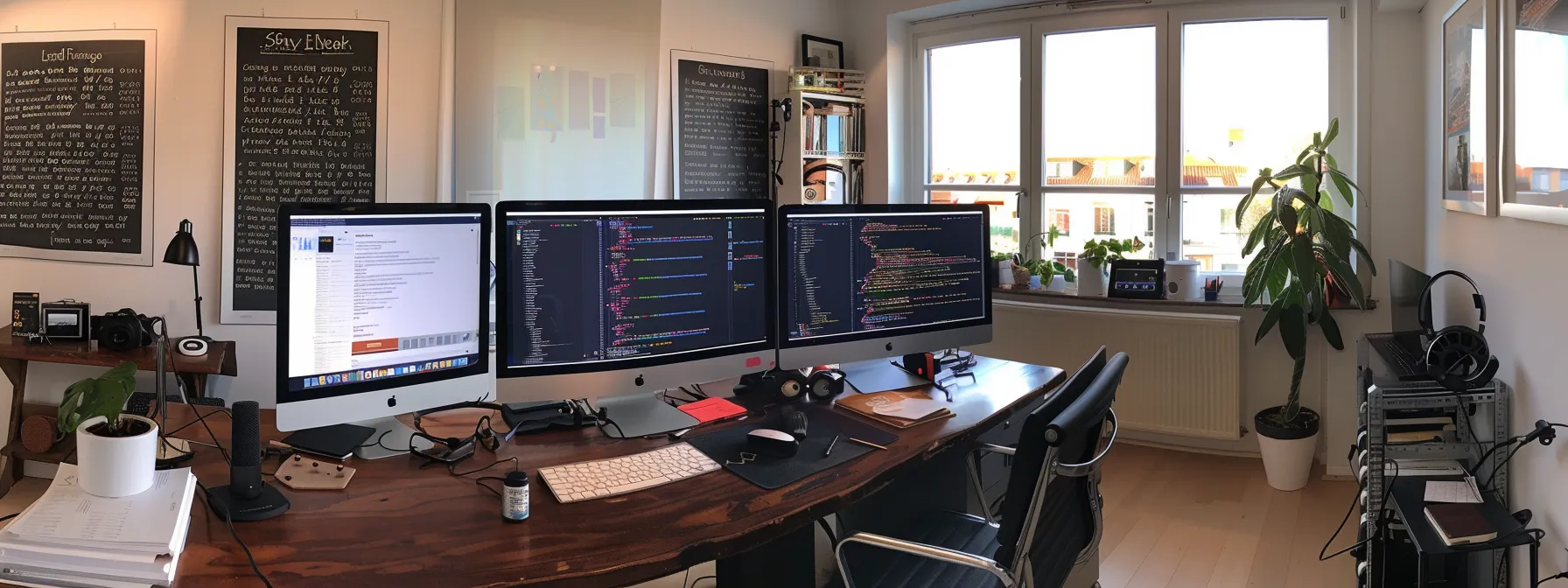How To Integrate Filament With Laravel for Efficient Web Development
As web development continues to evolve, finding streamlined solutions for administrative panels plays a pivotal role in creating robust applications. Laravel, the well-loved PHP framework, has made significant inroads in simplifying backend functionality with Filament. If you’re seeking efficient ways to manage your Laravel applications, integrating Filament is a wise move. Below, we delve into the integration process and how it can transform your development workflow.
Understanding Filament: A Modern Admin Panel

Alt text: Three-monitor desktop where Filament and Laravel are used
Filament is a full-stack UI framework specifically designed for Laravel applications that provides developers with a beautiful, customizable backend for their applications. Unlike other admin panels, it boasts a clean, modern interface that streamlines the management of database records. With its elegant set of tools, developers can quickly generate CRUD (Create, Read, Update, Delete) interfaces for their models.
What sets Filament apart is its adherence to Laravel applications’ best practices. The admin panel is built on Livewire and Alpine.js, technologies that blend seamlessly with Laravel’s architecture. This ensures that developers working with Filament can utilize familiar patterns and coding styles, reducing the learning curve and enhancing productivity.
The framework also offers a wide array of components and widgets, allowing developers to extend functionality with ease. From form builders to data tables, everything you need for admin panel operations is at your fingertips. Additionally, it supports theming out-of-the-box, meaning you can match the admin interface with your brand’s visual identity without hassle. For a deeper understanding of Filament’s capabilities, you can reference this detailed article on Filament and Laravel.
Setting Up Your Laravel Applications for Filament Modular Integration
Integration of Filament starts with preparing your Laravel environment. Assuring your Laravel version is compatible is the first step. Typically, Filament supports the latest Laravel applications, however, you should always verify the prerequisites for a smooth integration process. Additionally, you should have PHP and Composer installed, as they are essential for importing and managing packages in your project.
Once your Laravel environment is confirmed suitable, the next step is to install Filament via Composer. This package manager simplifies the installation, allowing you to quickly pull in the required Filament Modular packages with a single command. You should also ensure that your database is properly configured, as Filament will interact with it to manage your models and data.
It’s vital to maintain a backup of your Laravel application before integrating any new packages. This precaution protects your project against any unforeseen issues that could arise during the integration process. With these elements in place, you are well-prepared to take the next steps.
Post-installation, you may need to publish assets and configurations specific to Filament Modular. The “vendor:publish” command available within Laravel applications is designed to facilitate this process. This should properly set up the foundation and allow you to begin using its features within your Laravel application.
Step-by-Step Guide to Integrating Filament Into Your Project

Alt text: Desktop computer utilizing Filament and Laravel
The integration process begins with the installation of Filament using Composer. Open your terminal, navigate to your Laravel project directory, and execute the Composer command that pulls in the package. The documentation often offers step-by-step commands to follow, ensuring you’re never left guessing which steps to take next.
Having installed a Filament Modular package, the next move is to run the necessary migrations. This step creates tables required to operate. With Laravel’s artisan commands, running migrations is an uncomplicated task, often completed with a single line of input into the terminal. These migrations lay the groundwork to begin managing data within your application.
After migrating, you should create an initial admin user to access the admin panel. Typically, the framework includes artisan commands to simplify this process. With your admin user in place, you can proceed to navigate to the login page and access the dashboard using the credentials you just created.
Overall, Filament Modular provides Laravel developers with a compelling package to streamline admin panel creation and management. As the Laravel applications ecosystem continues to grow, tools like Filament become indispensable allies in shaping efficient and scalable web applications.

